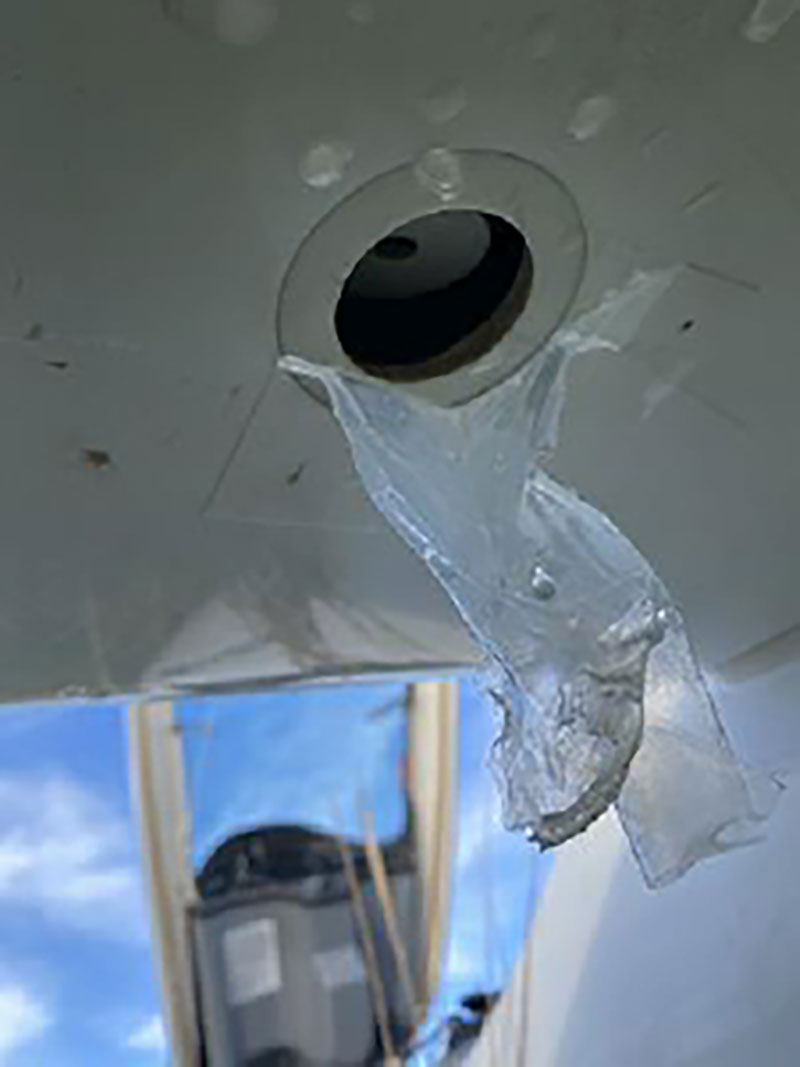All clubs and GFA members are urged to report all occurrences and incidents promptly, as and when they occur, using the GFA’s occurrence reporting portal at glidingaustralia.org/Log-In/log-in-soar.html. This is always best done while all details are fresh in everyone's mind.
You can read the full SOAR report at tinyurl.com/ltmko56
Reports noted 'Under investigation' are based on preliminary information received and may contain errors. Any errors in this summary will be corrected when the final report has been completed.
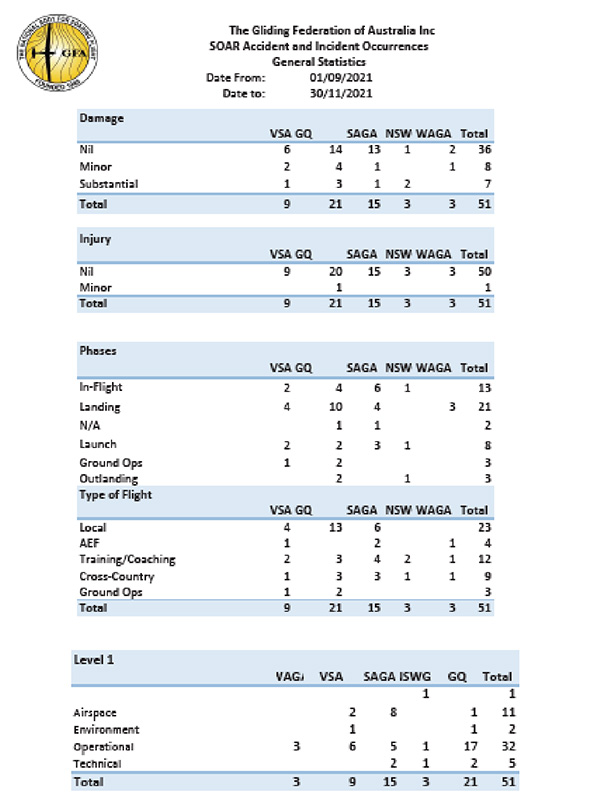
4-Sep-2021 GQ
Piper PA-25-235
weak link
What Happened
The tow pilot identified that the TOST weak link fitted to the tow rope had been incorrectly assembled and was double the rated strength.
Analysis
The tow pilot was inspecting the weak link and tow rope for serviceability as part of the Daily Inspection before the day’s operation when he noticed there were two equal link inserts fitted to the weak link. Both inserts had round holes rather than one having an elongated hole, which effectively doubled the breaking load (see photograph). There were no records of when the weak link had been changed, but it is believed many aerotows had been performed in this configuration. The tow pilot replaced the weak link and ensured the correct inserts were fitted.
Safety Advice
The TOST weak link system is an engineered and approved system which prevents aircraft overloading in winch, autotow and aerotow operations. By using this system, the operator is assured of maintaining the manufacturer's airworthiness requirements for protection of both tow plane and sailplane. The GFA recommends clubs and operators use the TOST reserve insert and sleeved weak link system. This uses two weak links in parallel protected by a steel sleeve. Both weak links have attachment holes at each end and are 8 mm in length. The reserve has oval attachment holes and carries no load in normal operations. If the load exceeds the rating, the weak link will fail and the reserve link will take up the load. If the load is more than a momentary jolt both weak links will fail. For further information, refer to Operations Advice Notice (OAN) 01/13 ‘Weak Links – Selection, Application, Safety and Testing of Glider Weak Links’.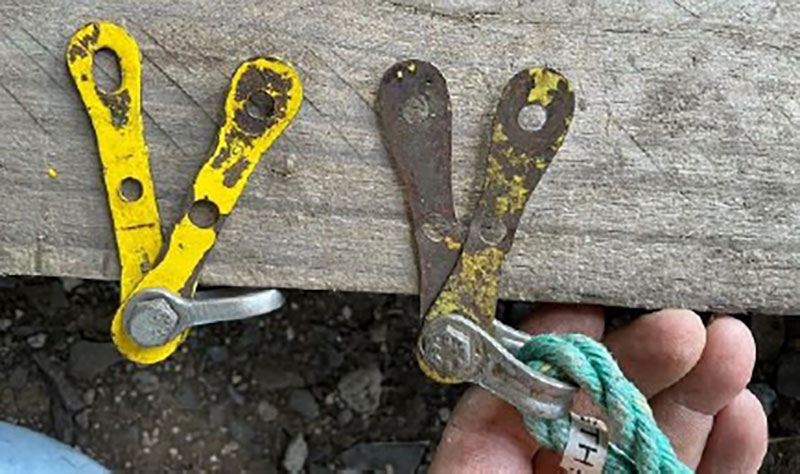
10-Sep-2021 SAGA
ASK21
terrain collision
What Happened
Under investigation. While landing with a crosswind and during the final approach, the glider drifted off the runway centreline. The instructor prompted the student to regain the centreline by turning slightly into wind, but the aircraft touched down near the side of the runway with the port wing over the ungraded verge. The port wing contacted the ground and tall grass caused the glider to rotate to the left through 130 degrees and skid to a stop about 3 metres off the runway. The glider suffered substantial damage to the port wing.
16-Sep-2021 SAGA
Ventus 2cxM
terrain collision
What Happened
Under investigation. The pilot conducted a low-level finish manoeuvre upon returning to the circuit from a cross-country flight but did not change his planned approach when it became obvious a modified circuit may be appropriate. As a consequence, the pilot conducted a very low turn onto final approach, following which a severe ground loop occurred. The glider was substantially damaged.
26-Sep-2021 SAGA
DG-1000S
technical
What Happened
Under investigation. One of the port airbrake panel mounting bolts was found to be not in safety. The aircraft had been subject of 29 Daily inspections since the last annual inspection.

9-Oct-2021 GQ
Standard Cirrus
Aircraft control
What Happened
The pilot left the decision to break off the flight late to search for thermals in the vicinity of the aerodrome before entering circuit and did not configure the aircraft for landing. Once in circuit, the pilot became distracted by radio calls and adjusting for lift and forgot to conduct the pre-landing checklist.
Analysis
The pilot advised that while planning to land he decided to see if there was any lift at a known location near the circuit joining area. He considered lowing the undercarriage at that point but decided to wait until joining the circuit to minimise drag. When arriving at the location he could not find any lift and joined circuit at the normal height. During the downwind leg the glider flew into lift while the pilot was responding to a radio call from another glider pilot about likely thermal sources. The pilot considered taking a climb in this lift but chose not to because of possible conflict with other circuit traffic and instead modified his circuit to account for the increase I height. The radio call and modification to the circuit led to the pilot omitting to conduct the pre-landing checklist, and the glider subsequently landed safely, albeit with the undercarriage retracted.
Safety Advice
Landing mishaps commonly occur to pilots who lack the discipline to break off the flight at an early stage, and who become overloaded in the circuit. Workload management can be eased by proper flight management, which includes attending to pre-landing tasks, like lowering the undercarriage, early rather than later in the circuit (OSB 01/14 'Circuit and Landing Advice' refers). Many similar accidents have had their genesis in pilots choosing not to lower the undercarriage until late in the flight in the mistaken belief that to do so would significantly reduce the glider’s performance by increasing the drag. While a lowered undercarriage adds to profile (or parasitic) drag, such drag increases with the square of the airspeed – so in most sailplanes the drag penalty of the lowered undercarriage is negligible up to normal cruising speeds.
20-Oct-2021 GQ
Standard Cirrus
terrain collision
What Happened
Under investigation. While outlanding, the pilot crowded their circuit and overshot the intended landing area. The glider touched down heavily in the following paddock that was upward sloping, and passed through a barbed wire fence before striking the hills hoist and coming to rest near the farmhouse.
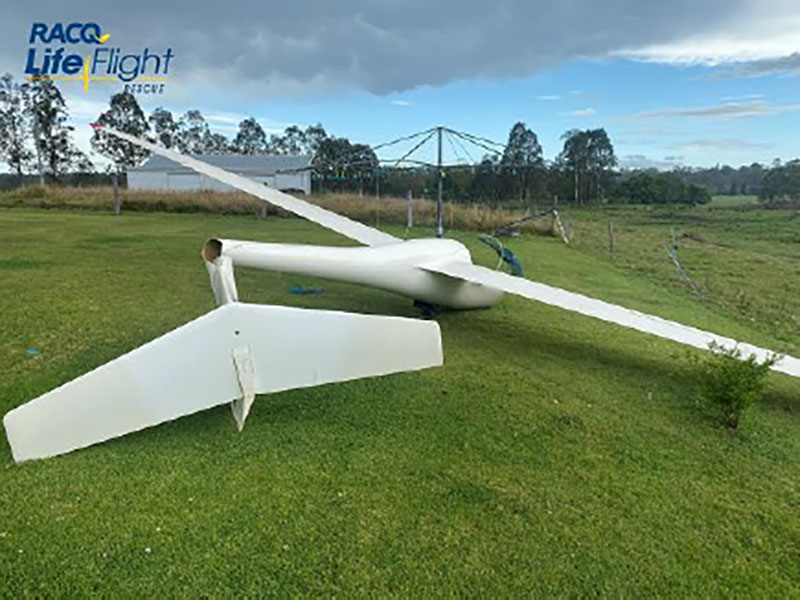
23-Oct-2021 NSWGA
DG-1000S
Launch
What Happened
While demonstrating a double hook-up manoeuvre at approximately 1700' AGL, a bow developed in the rope and the weak link broke while manoeuvring to take-up the slack. The rope recoiled over the canopy and left wing, and the weak link struck and penetrated the left wing (see photograph below). The pilot under review flew a normal circuit and landed safely with the tow rope still tangled over the canopy and left wing.
Analysis
The sortie was the second flight of an instructor Flight Review, and the pilot under review had not flown since July 2021 due to the Covid-19 pandemic lockdown. On this flight the pilot under review was demonstrating a pre-planned double hook-up manoeuvre at approximately 1700' AGL. During the procedure the pilot positioned the glider approximately 45° to the left of and below the tug, whereupon he paused in this position awaiting acknowledgement from the tug pilot. No acknowledgement was forthcoming, so the pilot positioned the glider slightly further out. On this occasion the tug pilot gave the appropriate acknowledgement, and the glider was then manoeuvred back to the normal towing position. During this manoeuvre a bow developed in the rope that curled back level with the glider’s starboard wing leading edge. While the pilot was attempting to take out the slack, the rope suddenly became taught and the weak link at the tug end broke. The tow rope recoiled towards the glider and draped over the canopy and port wing, and a section of the weak link assembly struck and penetrated the port wing. The instructor under review released the rope but it did not fall away, so a gentle descent was made to circuit height. Following a normal circuit, a safe landing was made with the rope still draped over the glider.
Safety Advice
It is not uncommon for slack to develop in the rope during out-of-station manoeuvres and for the weak link to break when the rope comes back under tension. In situations involving a large bow in the rope it is recommended that pilots release the rope just before the slack is fully taken up to prevent breaking the weak link, and also to avoid potential control difficulties should the rope wrap itself around a control surface.
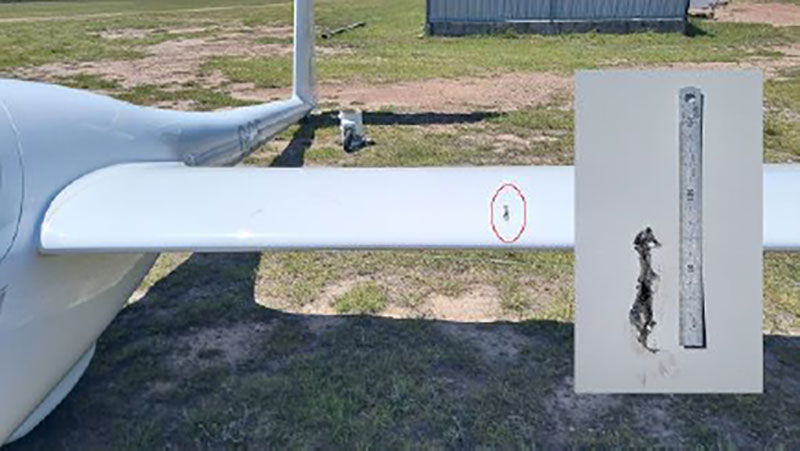
24-oct -2021 vsa
DG-1000S
technical
What Happened
Under investigation. The sortie was the post annual maintenance test flight. During the take-off behind the tug, and just after becoming airborne, the pilot flying heard a loud cracking noise from behind. The pilot released from tow and conducted a safe landing straight ahead on the runway. Upon exiting the glider the flight crew observed the wings "had a huge dihedral" (see photograph).
3-Nov -2021 nswga
js1 b
Terrain Collisions
What Happened
The sortie was the second flight after the annual inspection 2 inspection. For the first flight on the previous day the glider was unballasted. The pilot conducting a 350km cross country flight, and commenced final glide at 5050 ft QFE approximately 46 kms from the home airfield. The pilot reported encountering extensive sink, and opened the water ballast dump valves with about 25kms to run. At about 10kms inbound the pilot was on a crosswind leg at 600 ft AGL for the chosen outlanding paddock. The pilot deployed and attempted to start the sustainer jet engine, but it failed to start. The pilot then commenced a right-hand turn onto late downwind, intending to continue the turn onto final approach. The pilot lowered the undercarriage and selected landing flap but noticed the rate of descent was higher than normal. When approximately 100 metres from the boundary of the selected paddock, the pilot identified the glider was undershooting and, determined not to risk rolling through the wire fence, he steered the glider to the left.
During this manoeuvre the left winglet caught the ground, causing the glider to rotate through 180 degrees and travel backward to rest and retarded by the natural scrub vegetation which was about 2ft high. The pilot contacted the airfield to organise a retrieve crew, and then prepared for the de-rig. It was at this time the pilot noticed that the left wing was still full of water, and upon checking under the wing he found the drainage port was covered by a transparent adhesive patch, presumably applied during the annual inspection. The pilot stated that he had not noticed the patch during his daily inspection. The pilot believes that he may have been flying slightly cross-controlled due to the asymmetrical ballast configuration and that this resulted in a higher-than-normal rate of descent.
